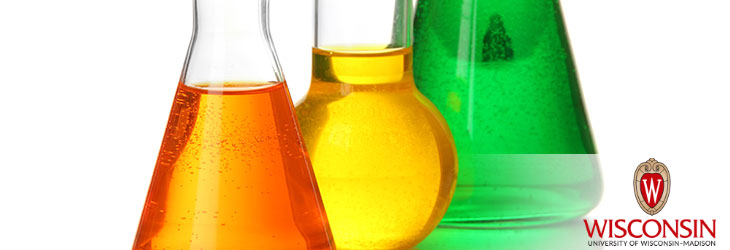Materials & Chemicals

High-Throughput Tool for Developing Enzyme-Mimicking Catalysts
WARF: P220207US02
Inventors: Jeffrey Martell, Edward Pimentel, Justice Merrifield
The Wisconsin Alumni Research Foundation is seeking commercial partners interested in a platform to accelerate the discovery of catalysts with diverse applications. This solution uses DNA nano-scaffolds to force abiotic functional groups into novel active sites.
Overview
Catalysts play countless roles in modern society including production of fertilizer, synthesis of plastics and other ubiquitous materials and development of pharmaceuticals. However, many catalysts require harmful reaction solvents or energy-intensive reaction conditions (e.g., temperatures and pressures). Natural enzymes have evolved to catalyze many reactions under mild conditions, but enzymes often require precise reaction conditions. This makes enzyme discovery slow and low-throughput.
The Invention
UW-Madison researchers have developed a rapid, high-throughput tool to discover novel enzyme-mimicking catalysts called DNA nano-scaffolds. This technology combines DNA nanotechnology, DNA-compatible synthetic chemistry and next-generation DNA sequencing to create polynucleotide molecules with active sites that pre-organize abiotic functional groups. These molecules couple the sophistication of enzyme active sites with the enhanced reactivity of abiotic chemistry, unlocking fundamentally new catalytic mechanisms.
Applications
- Discovery of catalysts with diverse applications
- Kits to guide researchers through the preparation of their catalyst libraries
- Dual catalysis through preorganization of catalyst pairs
- Rapid screening of polydentate ligand architectures
Key Benefits
No comparable tool is currently available on the market.
DNA nano-scaffolds operate efficiently under mild reaction conditions.
Dramatically reduces the environmental impact of the catalyst discovery process
Discovered catalysts will be significantly more efficient than those currently available.
DNA nano-scaffolds operate efficiently under mild reaction conditions.
Dramatically reduces the environmental impact of the catalyst discovery process
Discovered catalysts will be significantly more efficient than those currently available.
Stage of Development
The researchers have successfully constructed libraries of DNA scaffolds and isolated enzyme-mimicking molecules that efficiently catalyze reactions.
Additional Information
For More Information About the Inventors
For current licensing status, please contact Rafael Diaz at [javascript protected email address] or 608-960-9847